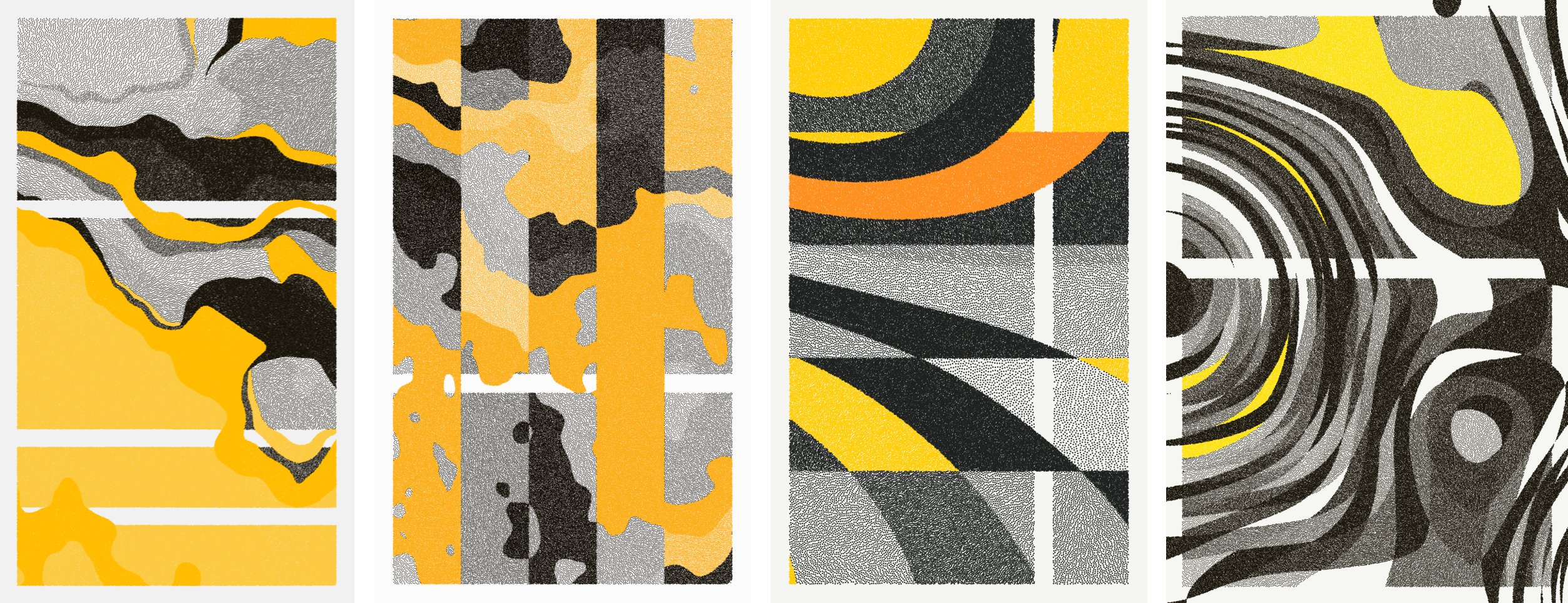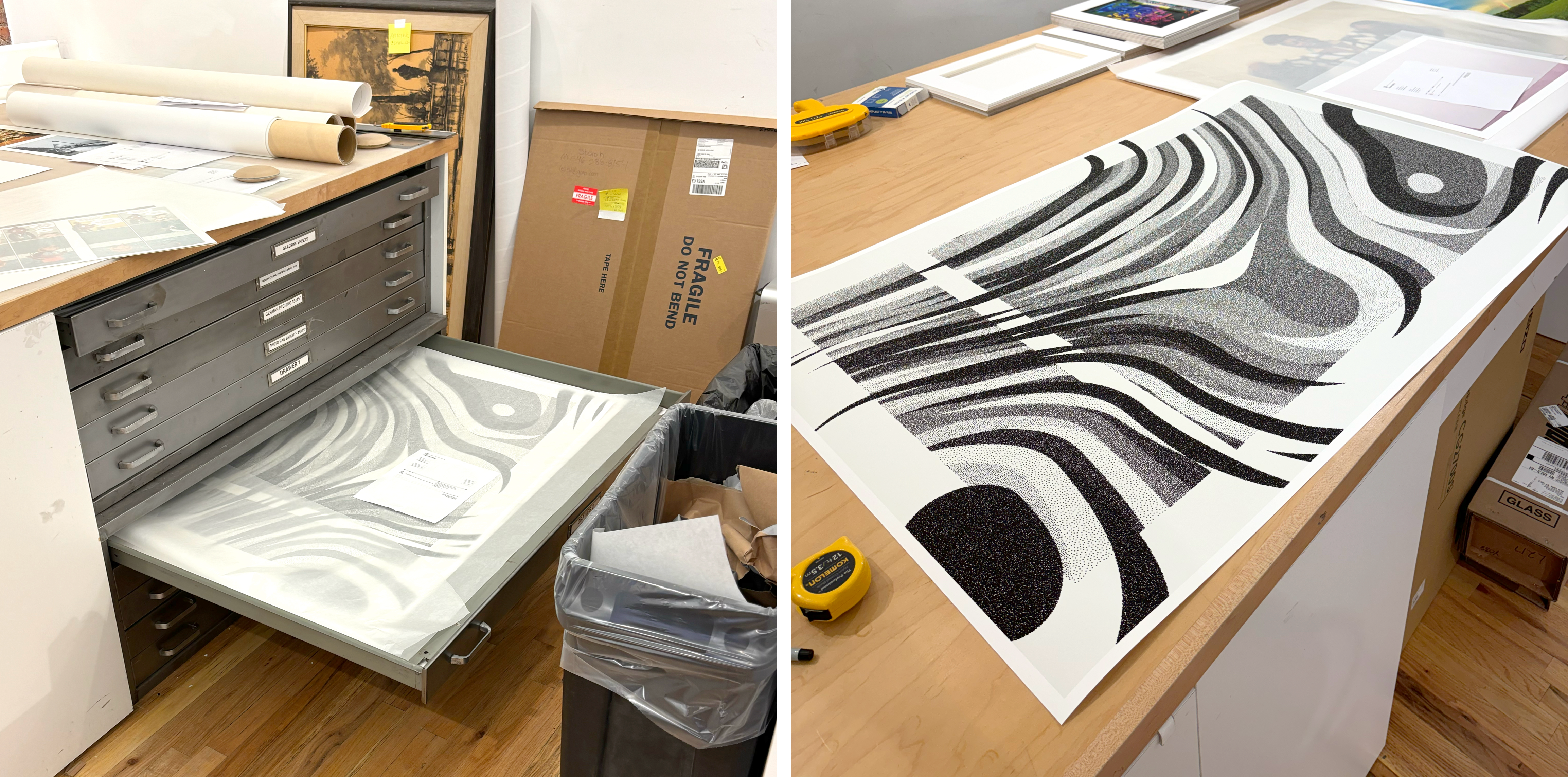Liminal
Liminal explores the disorienting beauty that exists in being in-between. It is a curated generative collection that focuses on borders & boundaries, beginning & endings, and celebrates the pieces of ourselves that exist in the state of turbulent traversal.

Background
I began working on the algorithm that underpins Liminal in April 2023, and the collection has gone through several sytlistic and computational evolutions over the last year+. From the outset, my goal was to create an artifact for this particular season of my life: something that could capture the beauty and joy during a period of turbulence, uncertainty and in-between-ness.


There are three steps that drive how the lims exist on the canvas: plotter points, grids and windows.
Plotter Points
Inspired by early generative artists and their technical practice, every piece in the collection is created by markings that could be made by a pen plotter: a clustering of tens of thousands of dots and lines, each placed in a way that creates a sense of large moving flows, which I've grown to call "lims". Some flow move freely through the canvas, others seemingly abruptly halted in their spread. But if you look close, none truly are stagnant.
Through the development of the algorithm, I practiced having the outputs printed and plotted on paper — both testing color pallets and verifying that my process could be fully reproduced in a plotted fashion.
Grids
The algorithm initially sets up a grid of squares: varied in number, pallet, and placement. Each rectangle in the grid is given a density, to which the pen marks adhere to. Some are tightly bound, others are sparse. This initial structure shapes the rest of the piece, and the decision to have it be a visible, viewable part of the output was heavily inspired by my study of Edward Zajec. My first three collections were all based on the study, reproduction and adaptation of Zajec's three most prominent pieces: RAM, Il Cubo / TVC and Diagonal White. Each of these find their algorithmic origins in grids laid out on a canvas, with a processing phase over each item on the grid, applying logic defined by the surrounding squares. Liminal found her origins in this context: one of rigid geometry and ordered structure. My goal was to both to conceptually tie my new work to the art I created studying Zajec, while also aesthetically push me further away from them.
Windows
After a grid of squares is laid out, each with a distinct density, the next step is to turn them into something far less recognizable. A warping function is applied with variation in turbulence and falloff to create the shadowlike movements across the canavs.
One of the central visual pieces of the work is the concept of windows, both horizontal and vertical. Algorithmically, only some lims can move freely between them, while most are stunted at their boundaries. Early iterations of the program had randomized warping in both the X-axis and Y-axis, creating a sense of unstructured flow through the piece. In later, current versions, only one direction is warped at a time, which is what creates the seemingly harsh panels of demarcation.
However, what at the outset seems so stark is actually soft and continuous up close: lims pass through those boundaries with a slight shift in density or color, continuing on the other side effortlessly.
Availability
Liminal has not yet been minted, but I hope to share it on the blockchain soon. If you'd like to chat about the collection, reach out to me at [email protected]
